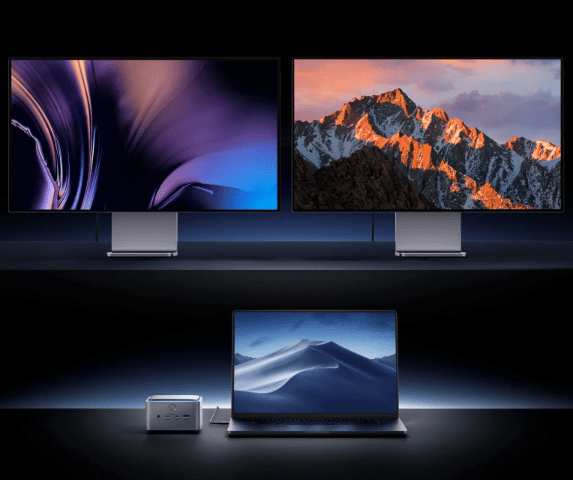
Working on a single laptop screen often limits efficiency, especially when balancing documents, spreadsheets, and video calls at the same time. A dual-monitor setup provides extra screen space, allowing smoother multitasking and better focus. Fortunately, connecting two external displays to your laptop doesn’t have to be complicated. With the right docking station and a few simple adjustments, you can enjoy an organized, professional-grade workstation. Let’s walk through the steps and key considerations for setting up a dual-monitor display for laptops effectively and without unnecessary hassle.
Steps and Tips for Setting up Your Dual-monitor Display
The following points highlight what you’ll need to know, from choosing the right dock to configuring settings on your laptop.
Check your laptop’s output capabilities.
Before investing in any accessories, confirm your laptop supports dual external displays. USB-C ports with DisplayPort Alt Mode or Thunderbolt 3/4 are ideal, as they transmit both power and video. Some Windows laptops support multiple displays directly, while certain MacBooks, especially M1/M2 models, have limitations without DisplayLink docks. Understanding your laptop’s GPU and port specifications prevents wasted purchases.
Choose the right docking station.
The simplest way to connect multiple monitors is through a reliable docking station for laptop. Anker’s docking stations, such as Thunderbolt 4 or DisplayLink-based triple-display docks, provide HDMI, DisplayPort, and USB-C outputs. For demanding users, Thunderbolt 5 docks can handle dual 8K@60Hz or multiple 4K monitors. Selecting a dock with enough video outputs ensures seamless setup, while also adding charging, networking, and peripheral ports for an all-in-one solution.
Connect monitors with proper cables.
Use high-quality HDMI 2.1, DisplayPort 1.4, or USB-C cables depending on your dock’s outputs and monitor inputs. A mismatched or outdated cable can limit resolution or refresh rate. For instance, if you expect dual 4K@60Hz output, make sure both the dock and monitors support it, and avoid older HDMI versions that cap at lower bandwidths. Reliable cables ensure smooth performance, particularly for tasks like video editing or stock trading.
Arrange your displays in operating system settings.
Once your monitors are connected, adjust their layout in your laptop’s display settings. On Windows, go to “Display Settings” and drag screens to match their physical arrangement—side by side, stacked, or angled. On macOS, open “System Settings > Displays” to do the same. Setting the primary display ensures taskbars and menus appear where you expect them. Aligning displays properly reduces cursor lag and creates a natural flow across screens.
Optimize resolution and scaling.
For the sharpest visuals, set each monitor to its native resolution, typically 1080p, 1440p, or 4K. If you mix monitors with different resolutions, adjust scaling so text and icons remain readable. Windows and macOS both allow independent scaling per display. For creative professionals, ensuring accurate resolution and color calibration across both monitors is essential for design precision and video work.
Enhance ergonomics and cable management.
Position monitors at eye level, ideally with the top of the screen aligned with your eyes, to minimize neck strain. If your dock doubles as a monitor stand, like some Anker 12-in-1 workstation docks, you gain storage space and improved posture. Use cable ties or under-desk organizers to keep cords neat. A tidy dual-monitor setup reduces distractions and contributes to a professional work environment.
Test performance and fine-tune.
After setup, test workflows like video calls, large spreadsheets, or graphic editing to confirm smoothness. If you notice lag, check your dock’s bandwidth limits or switch to higher-capacity ports (Thunderbolt instead of USB-C). Updating drivers or DisplayLink software may also solve glitches. Taking time to fine-tune ensures you get the full productivity benefit from your dual monitors.
Conclusion
A dual-monitor setup transforms your laptop into a powerhouse workstation, offering extra space to multitask, organize projects, and boost productivity. The right docking station, quality cables, and proper system settings are the foundation of a smooth experience. Ergonomics and cable management add comfort to long hours, while performance checks guarantee everything runs as expected. Whether you’re a remote worker, a student, or a creative professional, investing in dual monitors pays off daily in efficiency and workflow clarity.




